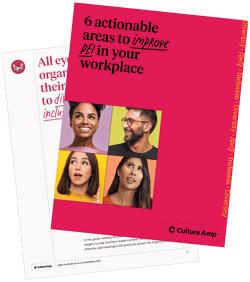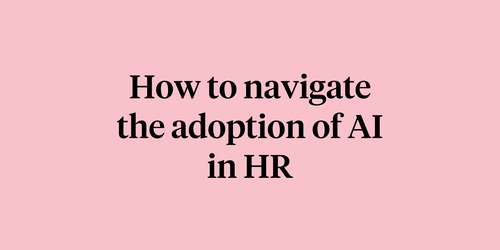
Diversity training: What works and what doesn’t

Written by

Head of Diversity, Equity and Inclusion, Frontier Communications
Diversity training programs can make workplaces more inclusive and productive, but how do they work? These trainings are designed to build employees’ cultural competence while raising awareness of unconscious bias and other barriers to diversity, equity, inclusion (DEI), and belonging. They can also motivate positive behaviors and attitudes and improve employee retention by fostering a positive work environment where folks feel comfortable bringing their full, authentic selves to work.
However, our 2024 DEI report revealed that perceptions of DEI in the workplace are declining globally. The percentage of companies extending their DEI efforts beyond basic compliance dropped from 71% to 60% over the last two years. This finding emphasizes the need for companies to recognize the value of workplace diversity and refocus their efforts.
Diversity training is a tool organizations can use to cultivate an inclusive workplace culture and turn their DEI commitment into meaningful progress.
However, workplace diversity training isn’t a catch-all solution for diversity, equity, and inclusion issues. Training is often an essential component of any successful effort to create a more diverse, equitable, and inclusive organization, but organizations must be careful not to use “diversity training” as a shortcut to gloss over their core DEI problems. It’s important to start with a root-cause analysis and targeted strategy to tackle challenges specific to your organization.
Diversity training programs are likely to be ineffective if your goal is to:
- Use them to change behaviors
- Achieve all your DEI goals
- Implement them without linking them to other DEI initiatives
Accordingly, we recommend using a "Define, Design, and Deliver" (3D) framework to address DEI issues more broadly. Under this approach, diversity training can be useful at any one of these stages:
1. Defining and assessing the problem
2. Engaging with employees to design a strategy for solving it
3. Determining how to implement the strategy.
What is diversity training, and why does it matter?
There is a great deal of diversity within and among diversity training programs, and different types of training offer assorted benefits. Once you’ve identified the issues you’re trying to address, you’ll be in a better position to decide which type of program is right for your organization.
Here, we’re using “diversity training” to describe any intervention aimed at improving intergroup relations and reducing bias/prejudice in the workplace. While there are many variations of diversity training programs, we’ll look at three of the most common to clarify the nuanced differences:
- Unconscious bias training addresses social stereotypes about certain groups of people that individuals form outside their conscious awareness.
- Awareness training focuses on understanding microaggressions and belonging.
- Skill-acquisition training covers various topics, such as inclusive management, inclusive interviewing and hiring, and allyship.
Think of workplace diversity training as any other form of employee education – each program has unique content, goals, and intended outcomes.
Applying the 3D framework to diversity training
Ready to Define, Design, and Deliver a diversity training program that will work for your organization? Here’s a step-by-step overview of how to put the 3D framework into action.
Define: Identifying the key DEI challenges in your workplace
Like any other organizational issue, you can’t design a robust and effective solution without knowing where the problems are. However, when it comes to DEI, many organizations jump to training as a knee-jerk solution without putting the time and effort into identifying the root causes. To start this process, collect data that will help you identify the specific DEI issues you’re trying to solve.
People analytics is a great tool for collecting and analyzing large amounts of people data to provide actionable insights on the state of DEI at your organization. While the information you gather from people analytics platforms is powerful, it’s most meaningful when combined with people science. You’ll develop a deeper understanding of what helps people thrive within your organization.
We often have clients come to us with requests for diversity training before they’ve collected significant internal data or analysis on what DEI issues they’re experiencing. Part of this trend can be attributed to the high visibility and media attention paid to the unconscious (implicit) bias training that organizations often institute when faced with a DEI crisis. It’s worth noting here that research on unconscious bias training shows its effectiveness is varied, and it has diminishing effects if not reinforced over time.
While diversity training can be a useful tool, other interventions may be a better fit for your organization. Collecting data will help you narrow the field of choices.
What data do you need to collect to understand DEI issues at your organization?
Collect quantitative and qualitative data to identify the root causes of DEI issues. A mixed-methods approach reveals “what” is happening and provides further context around “why” it’s happening. With those insights, you’re in a better position to start identifying solutions.
We recommend beginning your inquiry with a diversity and inclusion survey, demographic measurement, and small focus groups with leaders, managers, and individual contributors. You may already have good demographic data on recruitment, hiring, and retention.
However, capturing your employees' perceptions and behaviors will provide equally valuable insight into their perspective of what’s happening. Leader messaging is critical: Be sure to share why you’re conducting this research, the timeframe, and how you’ll communicate the results. Providing transparency around data gathering reduces the likelihood that people will misunderstand the intent or see it as an indirect judgment of a particular employee group.
When we partnered with one of our clients to help inform their new DEI strategy, their first step was to run a diversity-focused Strengths, Weaknesses, Opportunities, and Threats (SWOT) analysis.
The four company work streams convened small teams that conducted content audits, surveys, and interviews of multiple stakeholders to understand the problems they were trying to solve. They then partnered with Forshay to synthesize these insights, prioritize, and build their DEI strategy so they could achieve a more diverse workforce and inclusive workplace.
Design: Crafting diversity training solutions that drive change
How do you choose the right interventions? Based on your research, create a set of impactful and sustainable interventions to address root issues. This process will be most effective if you partner with multiple stakeholders within the organization.
When designing strategic recommendations for our clients, we co-design and crowdsource every single one. With the client mentioned above, we not only interviewed several stakeholders as we wrote our report but also gleaned insights from Employee Resource Group surveys. This ensured that the solutions we designed would directly address the concerns of all employees.
When deciding which strategic recommendations to design for different growth areas, we had to ask ourselves: Now that we know what’s happening, is a workplace diversity training program going to help? When thoughtfully executed, these programs can:
- Connect everyone in the organization to your company’s motivation for increasing DEI.
- Give everyone shared definitions and education around DEI topics, empowering them to see how these concepts manifest in their day-to-day work.
- Provide an opportunity for employees to connect their learnings to the organization’s larger strategic DEI goals.
Research shows, however, that training can create negative outcomes if not thoughtfully executed alongside a comprehensive strategy. This is backed up by our 2024 DEI report findings, which strongly suggested that a DEI strategy integrated into a company’s ongoing operations is significantly more effective than one-off actions.
So, what are some other approaches to consider?
The key to good design is mapping specific problems to specific interventions. These may include just-in-time tools, office hours, values audits, leadership development programs, hiring and recruitment assessments, and sponsorship programs. Some of these interventions are designed to be continuous, some are deployed just once to respond to an acute need, and some can be rolled out to specific populations as needed and on a regular schedule.
Tip: Prioritize creating transparent processes for career advancement
While every company is unique, our people scientists have found that transparent processes around career development have the biggest impact on how employees perceive diversity at their company. Specifically, our data reveals that employees at companies that have a transparent process for career advancement rate them 7% points higher in valuing diversity.
Companies can achieve more transparent processes by:
- Implementing career pathing
- Creating individual development plans
- Ensuring job descriptions are clear and up-to-date
- Embedding development conversations into regular 1-on-1 meetings
Deliver: Ensuring long-term success with diversity training
Like any product you roll out to your customers, DEI programs must be well-planned, well-executed, and monitored for success. Once you’ve selected your DEI interventions, implement them as part of a comprehensive strategy that includes a way to measure outcomes, sustainable org-wide support, accountability, and long-term planning.
Also, be sure your DEI initiatives recognize intersectionality and the nuanced differences between different employee groups’ experiences. As we found in our 2024 DEI report, there are major disparities in experience for employees with intersectional minority identities, especially compared to peers with majority identities. This is especially apparent when we look at employees’ perceptions of:
- Whether their company values diversity
- Whether their company provides equitable opportunities
- Whether their perspective is included in decision-making
How do you measure DEI outcomes?
To measure the outcome of diversity training and other DEI initiatives, determine in advance what “good” looks like and identify shared metrics for measuring progress. Implementing an effective DEI strategy is an evolving practice requiring flexibility, iteration, and assessment. Getting this right at first can be hard, so it’s key to acknowledge failure as part of the process.
To lessen potential blowback, consider beginning with safe experiments – small beta tests of your chosen interventions with outcome measures – before rolling them out to the entire organization. This approach lets you identify what works before investing in a larger rollout across your organization.
For example, one of the problems our client identified from their SWOT analysis was poor management. In response, we are co-designing a global training for inclusive management, and we plan to roll out a local pilot program in one of their Bay Area offices. After this initial roll-out, we will co-design and localize the training to be delivered to additional global offices. This and our other strategic recommendations will be incorporated into the company’s new DEI strategy.
Why investing in workplace diversity training drives lasting impact
A diverse workforce offers many compelling advantages for employees and the business, from increased innovation to better business outcomes. For example, employees in diverse organizations experience more growth opportunities, better job satisfaction, a stronger sense of belonging, and improved well-being.
When companies deprioritize DEI, they overlook the benefits to employees and the quantifiable business outcomes.
Our research shows that organizations with inclusive cultures are:
- 2x more likely to meet or exceed financial targets
- 3x more likely to be high-performing
- 8x more likely to have overall better business outcomes.
Essential resources for delivering impactful diversity training
As noted above, effective implementation of a diversity training program requires experimentation, data collection and analysis, and the time and expertise to iteratively try new approaches until agreed-upon outcomes are reached. Processes like these require time, skilled people, and the resources to pay for the work – and to pay people for doing this work instead of other work.
The role of leadership in successful DEI programs
Senior leaders control these resources and decide where to put them. Therefore, they must be involved in the delivery phase of DEI interventions. They’re in a position to dedicate specific resources and make DEI work and awareness a strong priority for the whole company. For example, they can advocate for creating specific programs, such as employee resource groups or mentorship programs focused on empowering underrepresented employees.
Setting benchmarks for measuring diversity training success
Good delivery of DEI programs requires collaborative, long-term planning and accountability. Who owns what aspects of the project? How does one leader know when their team has made progress sufficient to move forward?
Ensure your strategy involves all the relevant stakeholders – not only senior leaders but people at every level of the company. For example, do managers feel equipped to measure their progress and seek resources if they need help? Do individual contributors feel empowered to help implement the program and offer feedback if they see areas for growth?
Using people analytics to measure diversity training impact
Just as people analytics can help you identify the state of DEI at your organization, it can also help you determine whether your workplace diversity training is working. Paying attention to how training impacts your diversity index, as well as collecting employee feedback and other insights related to DEI, can help you decide whether it’s been effective in achieving your goals.
Creating an inclusive workplace where everyone thrives
Diversity training can help you create a more diverse, equitable, and inclusive work environment, but it’s insufficient on its own. Think of these trainings as one tool that can be integrated into a comprehensive strategy where you:
- Define the problem
- Design thoughtful interventions
- Deliver lasting results
As we've learned through our work with clients, DEI strategies are treatment plans. You start by identifying specific issues and then develop a structured, comprehensive, and holistic vision for long-term change.

Build a workplace where everyone can thrive
Explore more of Culture Amp’s DEI tools and resources
- Guide: HR’s complete guide to diversity, equity, and inclusion
- eBook: Top 11 HR metrics that high-performance cultures track
- Webinar: How to use your people data for DEI solutions
- Case study: How On is making a trailblazing run toward diversity and inclusion with Culture Amp
About the writers

Marlette Jackson, PhD Scientific D&I Consultant, Forshay Marlette Jackson, PhD, works with companies to promote a culture of inclusion and equity that empowers all employees to be their full, authentic selves. As a Scientific D&I Consultant, she combines empirical research with a human-centered framework, and specializes in identifying and remedying barriers to career advancement for women and racial and/or ethnic minorities. Marlette works with companies to amplify impact, harness the power of collaboration, and implement impactful strategies that drive meaningful and sustainable DEI efforts throughout the talent life cycle.

Jon Shafran, Ph.D. Scientific D&I Consultant, Forshay
Jon Shafran, Ph.D., believes that people are an organization’s most important asset, and organizations that cultivate a diverse workforce create the most innovative and profitable solutions. As a Scientific D&I Consultant, he uses qualitative methods and insights from the social sciences to help clients create workplaces that are equitable and foster inclusive cultures where everyone can experience a sense of belonging. This approach, validated by research, ensures that clients have a leg up on their competition for attracting, retaining, and promoting the very best talent in their industry.

